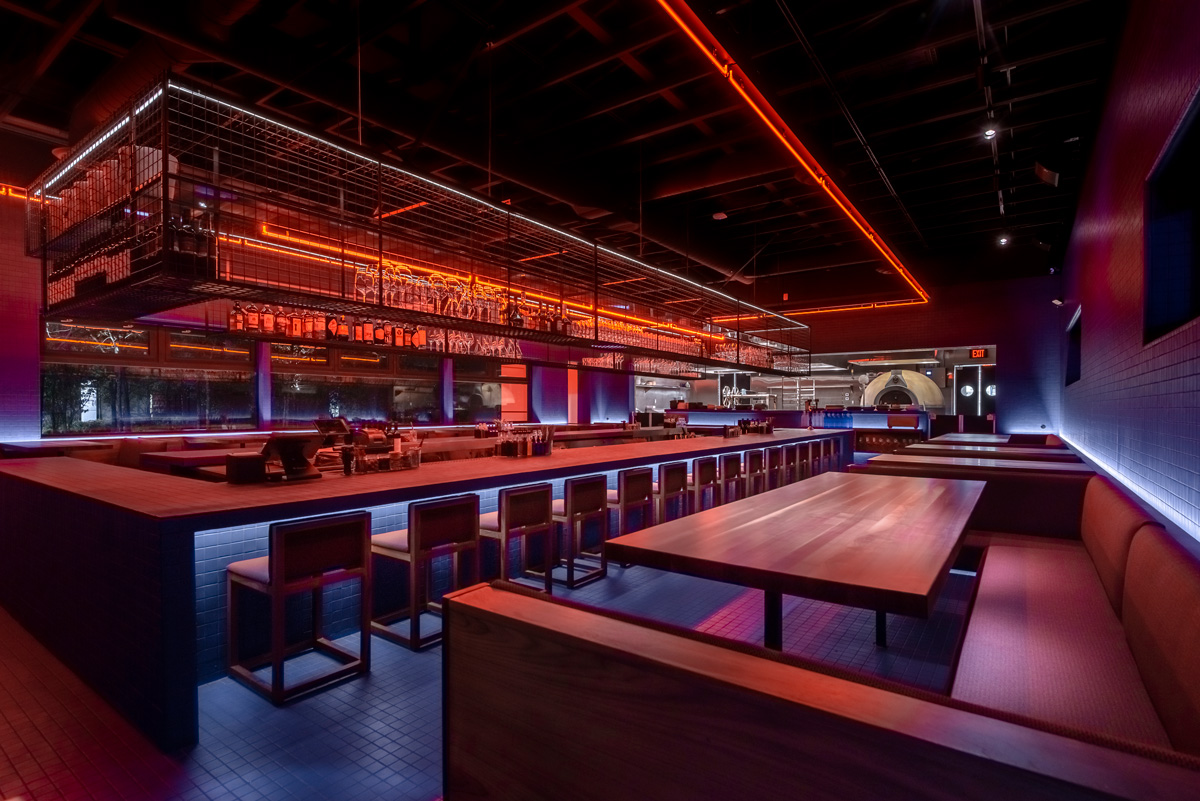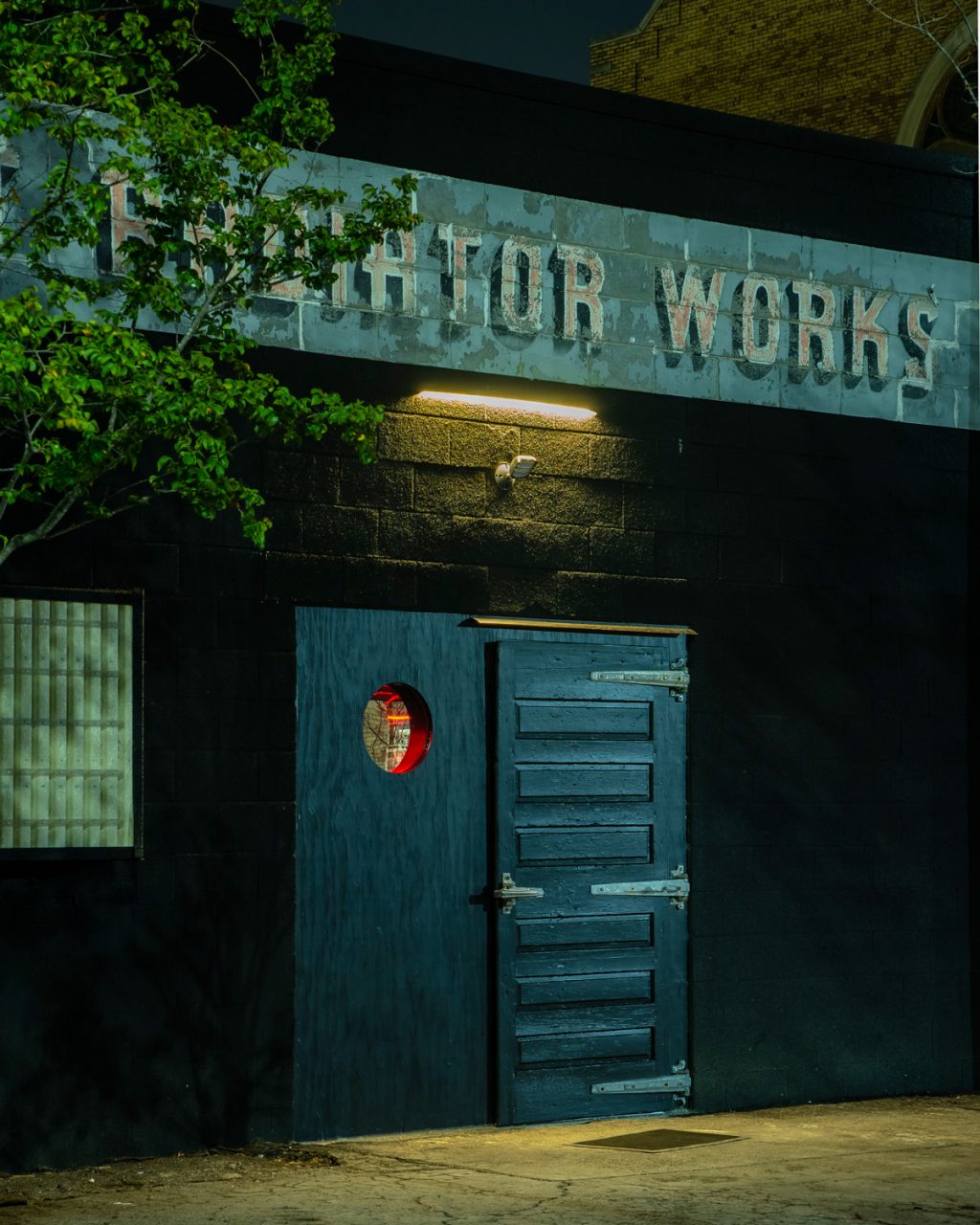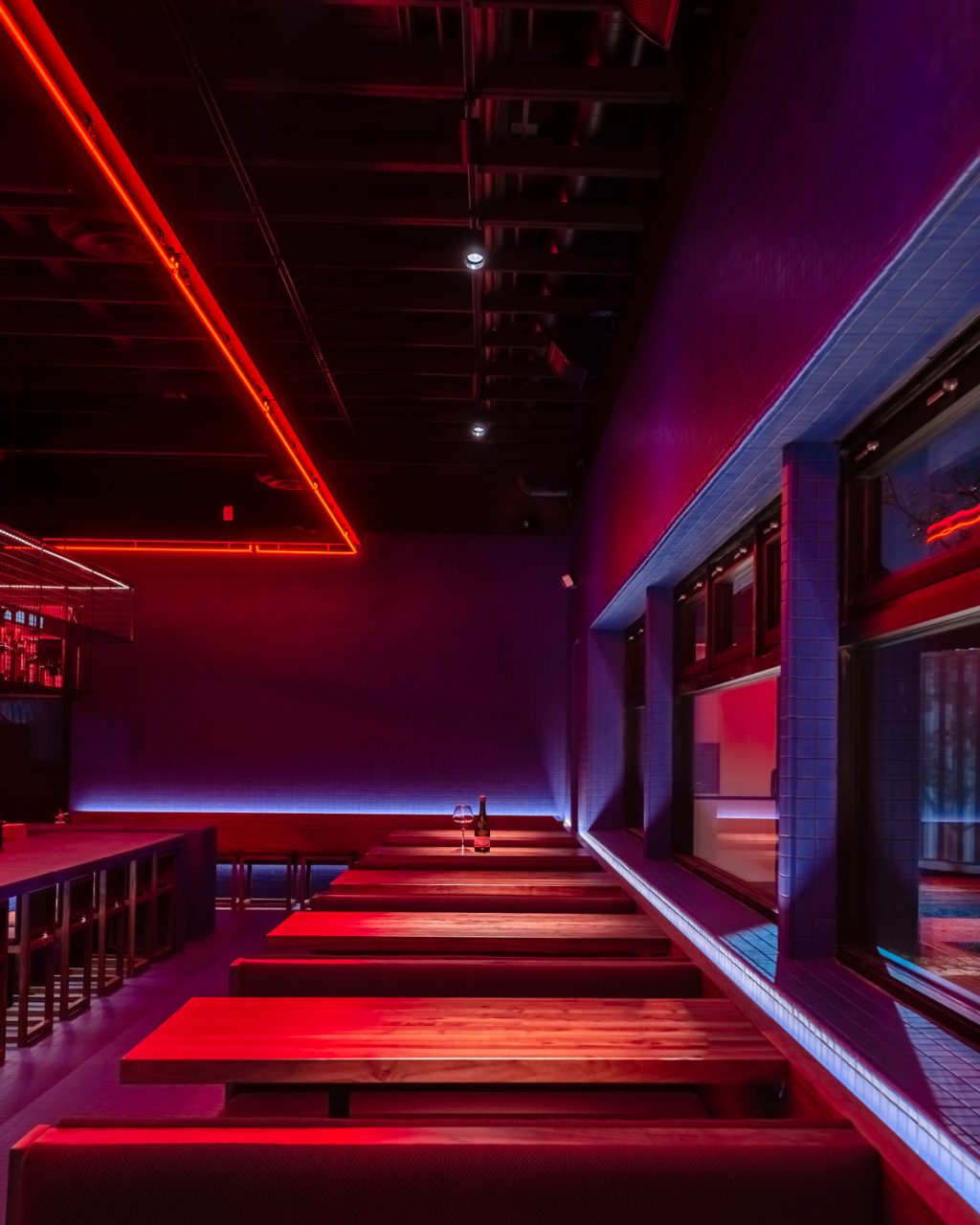An unassuming brick building in Detroit’s long-neglected Core City neighborhood was once home to a booming repair shop in the heyday of automotive manufacturing. “Magnet Radiator Works,” was emblazoned on the entrance of the facility in faded red paint and still is, except today the 2,100-square-foot structure is instead one of the hottest restaurants to pop up in the Motor City this year.
Featuring an interior ambiance that feels both futuristic and chill, Magnet is the vision of Ishtiaq Rafiuddin, principal of local firm UNDECORATED, and developer Philip Kafka, both the minds behind the 2017 Thai-food sensation TAKOI. The duo transformed a former garage near downtown Detroit into a minimalistic and intimate space that aids Chef Brad Greenhill in serving up a bold Mediterranean cuisine.

Because the interior is so sparse with just a few stand-out materials, the food—and the people eating and making it—take center stage. Rafiuddin said the design process was therefore largely led by intuition; the simple yet focused organization of the restaurant was key in attracting people to the quiet street Magnet sits on.
“We realized that working in Detroit forces us to intuitively make spaces that get people really excited otherwise they’re not going to come,” he said. “We wanted to have a bar-restaurant where the culture was created around the bar, a stage for performance.”


Without consulting a lighting engineer, UNDECORATED integrated neon red into various architectural elements throughout Magnet that cast the blue interior in a purple and pink glow.
“We expected something like this to happen, but didn’t know exactly what and it worked out much to our surprise,” said Rafiuddin. “You get this crazy contrast between the ultra-blue tile and the neon so much so that they cancel each other out. They are performing together in a way.”
For the thin lighting tube that wraps the drop ceiling above the bar, the designers sourced glass test tubes and worked with Detroit-based neon company Alboco to infuse natural neon gas into them. A one-inch-thick neon tube had never been used before in the neon industry and their DIY-result, according to Rafiuddin, was purposefully cloudy—guests can actually see the electricity passing through the gas.



Other materials used in Magnet include walnut for the smooth, booth tabletops. Veneers for the seating were made by Maharam and the black paint covering the exterior of the formerly grey-brick structure includes a resin made with chips of granular cork. Created by Toronto-based company Vipeq, the product gives old buildings both a texturized, fuzzy look and some insulation as well. All these elements are experienced differently from day to night but together offer up the functional and communal atmosphere that UNDECORATED was going for. The layout was always intentional, Rafiuddin explained, but the performance of the materials and how the bartenders, cooks, and guests have played individual roles within the space, was experimental.
“At once, the restaurant feels very fresh and then very seductive and provocative,” he said. “We’re taking people from their ordinary day-to-day lives when they walk into our restaurant and we want them to enter into an event—a significant moment where everyone is like a character in this play and we just set the scene for it.”



